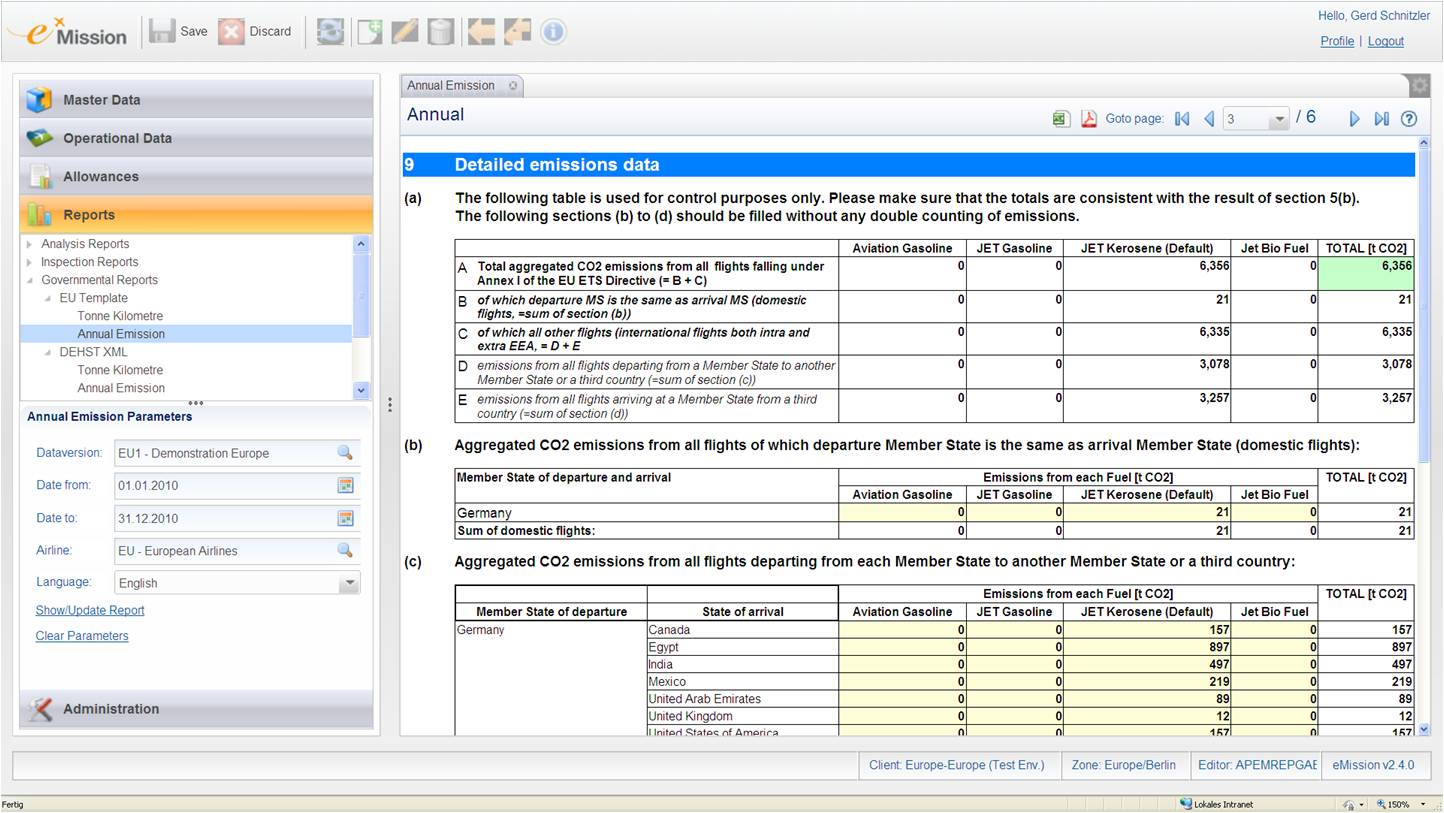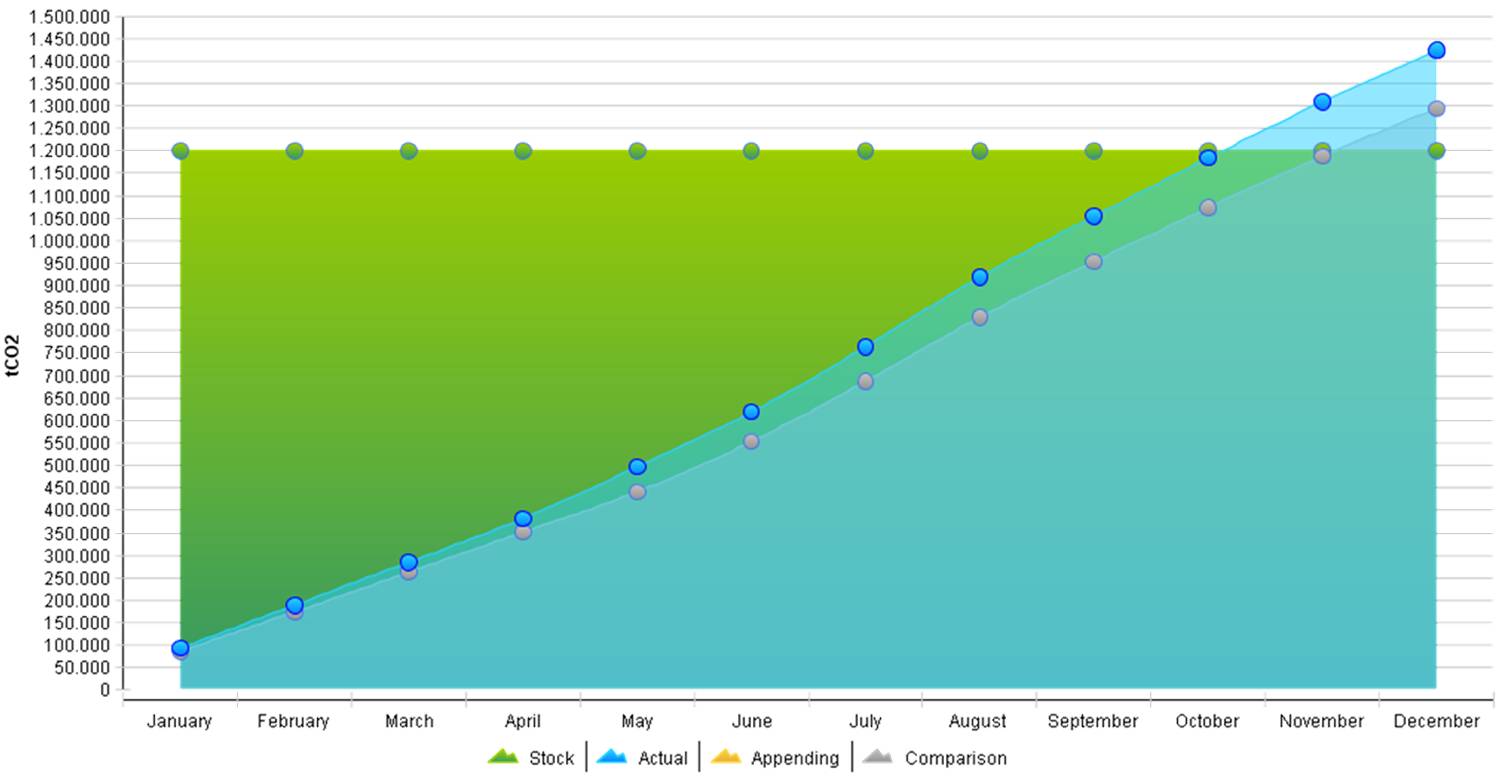Articles
| Name | Author | |
|---|---|---|
| Case Study: Great service whenever, wherever, whatever, however | Jatooron Suwannarut, Department Manager IT Management, Operations, Thai Airways International | View article |
| White Paper: Taming the ETS-Compliance Beast | Guido Harling, ETS-Auditor and Aviation IT expert, Tasc4Aviation | View article |
| White Paper: Getting the right Data Transmission for the job | Sergio Martins, President, LinkSMART | View article |
| Case Study: How to Implement fuel savings linked to EFB | Capt. Joachim Scheiderer, Manager Flight Operations Engineering, Lufthansa CityLine | View article |
| White Paper: Operational Data as a Global Business Asset | Shaun Rattigan, Technical Director, Aviation Intelligence | View article |
White Paper: Taming the ETS-Compliance Beast
Author: Guido Harling, ETS-Auditor and Aviation IT expert, Tasc4Aviation
SubscribeTaming the ETS-Compliance Beast
Guido Harling, ETS-Auditor and Aviation IT expert, Tasc4Aviation explains how to handle the requirements of the EU ETS directives and how to minimize the cost of compliance by utilizing clever IT tools
Since the EU ETS (emission trading scheme) directives came into force in January 2010, aircraft operators have been faced with a whole raft of new requirements. In the first place, they need to record and report emissions every year, in a specific format, to their Competent Authority – usually the national government department that is charged with ensuring that the Directive is adhered to in each country where the its terms are applicable. And then, from the year 2012 onwards operators will need to submit emission certificates to offset the actual emissions produced and to calculate the net balance on their emission account. All of these requirements are creating an additional burden of administration and record keeping for operators and this article sets out to show some ways and means by which they might minimize the cost of ETS compliance, through employing intelligent IT tools.
ETS Reporting Requirements
The European Union Directive 2008/101/EC, clarifying how emissions from the aviation sector will be included in the EU ETS, was approved in February 2009. According to this directive, starting from 1 January 2012, all aircraft operators flying to or from any airport in EU territory will be included in the EU ETS. Currently, the number of aircraft operators obliged to fulfill the directive’s requirements is around 4000. According to Directive 2008/101/EC, airline operators should monitor and report their annual emissions and comply with caps for domestic and international flights on a country-by-country basis. The cap for the sector is decided based on ‘historical aviation emissions’. In practice, this means the average of the sector’s annual emissions in the years 2004, 2005 and 2006. Each aircraft operator had the opportunity to apply for a free allocation by submitting its monitoring plan for tonne kilometer data and submitting a tonne kilometer report, by no later than 31st May 2011. Verification of the ‘one time’ tonne kilometer report and the annual emissions report has to be undertaken by an accredited verifier – a list of accredited verifiers can usually be accessed through the website of the Competent Authority in each country where the Directive is applicable. The tonne kilometer data that aircraft operators can submit to Competent Authorities is that for 2010.
The Competent Authorities will submit aircraft operators’ tonne kilometer information to the European Commission by 30th September 2011 and the Commission will calculate the benchmark, which will be the basis for calculating the free emission allowances that aircraft operators will receive. Then, the Competent Authorities will calculate and publish emission allowances for each aircraft operator, at the latest, by 31st December 2011.
The EU ETS has generated significant reporting and audit requirements. Business processes and IT systems will need to be adjusted to enable companies to fulfill their obligations and generate relevant information for decision makers in the company. The appropriate tool in this context will support the operator’s reporting compliance and support the setting up of processes and systems with the least administrative costs for operators.
ETS Financial Requirements
The first trading period commences from 1st January 2012. The impact of this will be that, each year, starting from 30th April 2013, aircraft operators will be obliged to submit their annual emission allowances to be set against their verified reported annual emissions for the previous year. From 2012 until 2020, by no later than 28th February each year, the Competent Authority will issue and transfer the number of free emission allowances allocated to each individual aircraft operator. Starting from 2013, after aircraft operators have submitted their verified annual emissions data, at latest by 31st March each year, and the Competent Authority has checked it, those aircraft operators will have to surrender, by 30th April each year, their free allowances for the previous year.

Aviation ETS Timeline
Under EU ETS, aircraft operators who emit more than the emission allowances they have received for free will be obliged to buy allowances from other participating aircraft operators or from operators of fixed installations, which are also covered under the EU ETS.
Aircraft operators can fulfill their obligations to surrender certificates by buying carbon credits or allowances. There are a variety of allowance certificate types and a variety of procurement channels, such as EUA’s (EU allowances), EUAA (EU Aviation Allowances) and allowances generated by CDM (Clean Development Mechanism) and JI (Joint Implementation) projects – Certified Emission Reductions (CERs) and Emission Reduction Units (ERUs). If, before 30th April of each year starting from 2013, aircraft operators cannot manage to submit sufficient emission allowances, i.e. they fail to submit emission allowances equivalent to their annual verified emissions for the previous year, they will have to pay a fine of €100 per tonne of CO2 emission and they will have to pay the full current market price for purchasing any remaining allowances that they have to surrender. Moreover, if an aircraft operator cannot manage to pay its fine or surrender sufficient allowances, it may lose its license and that may, in turn, lead to confiscation and sale of its aircraft.
The key issues for the operator in the quest to minimize the financial impact of the scheme are therefore to know their individual exposure as a result of verified emissions and to know what and how to buy any emission allowances they might need. Carbon certificate prices have been volatile in the recent years, trading, at different times, from close to zero to above €30 per tonne. Defining the required amount of emission certificates plus buying at the best possible price is obviously a key matter for budgeting and financial planning in every airline. So a tool is needed that supports operators in the carbon purchasing process, in the investment decisions that have to be made and in a calculation of that process’s impact on operating the business.
The financial requirements of EU ETS, even though they might not appear on everyone’s radar today are every bit as important as the annual reporting requirements. Operators will want to turn to IT tools to optimize the utilization of their free emission certificates. At the same time they’ll require intelligent forecasts and advice on when and what to buy. Both ETS requirements (reporting and financial) will have to be dealt with when selecting an ETS software package.
Appropriate ETS solutions need to fulfill a number of criteria to handle the above mentioned requirements. Below are some of the more important criteria that any ETS software package will need to meet.
- Data input
First of all a software solution needs to have flexible channels for data input. The source data for ETS is created in the aircraft cockpit and in the aircraft operator’s operations systems. Sometimes data is available on paper (like fuel slips) in other cases data is available electronically, like fuel suppliers’ invoices. A further key data source is the Eurocontrol support facility. Here the operator can download all the invoices for his call sign and use that data for the annual emissions report.
Data Input channels:
- OPS-System interface;
- DCS messages for departure and arrival information from the airport;
- EFB, e-Load Sheet;
- ACARS messages;
- Eurocontrol support tool (CRCO Datalink);
- Manual Data Input.
- Legal requirements and archiving
The mandatory requirement for any ETS software application is that it fulfills all the legal requirements of the directives. This may sound as if it would not be worth mentioning but the ETS directives impose several unprecedented legal requirements on operators. For instance operators are required to store the source evidence for the emissions data (fuel slips, flight logs, rtc.) for 10 years. Legal requirements and archiving requirements:
- Provides regulatory required ETS reporting formats;
- Flexible reports and queries;
- Stores documents and data for 10 years;
- Provides an audit trail.

ETS Solution eMission providing the EU annual emissions report layout
- Cross checking and validation
The next set of requirements will be useful during the creation of the annual emissions report and its respective verification process. Intelligent software should perform automatic validations and flag missing data entries as well as obviously wrong values, so that the audit will be less problematic. Requirements for cross checking and validation:
- Automatic cross check of flight data (actual against flight plan against Eurocontrol);
- Validation of fuel uplift with fuel invoice and, for instance, a review of historic fuel consumption;
- Flagging of obviously wrong data (e.g. boarded numbers greater than seat capacity or fuel uplift greater than tank capacity);
- Drill down functionality.

Data Inconsistencies Report by ETS IT Solution eMission
- Optimization and simulation
The next set of requirements for an ETS IT solution is geared towards the optimization of the certificate use as a whole. Intelligent IT solutions are able to forecast the emissions for a carrier according to different fleet structures or different networks. For non-scheduled carriers these solutions can forecast the emissions for a single flight, so that the operator can choose to take the job or not. By the same token, such solutions can also assist in the evaluation of a more modern and fuel efficient fleet. Requirements for Optimization and Simulation:
- Fuel management capabilities;
- Emissions forecasting and simulation capabilities.

CO2 emissions forecast by the ETS IT Solution from Fuel Plus
- Allowance management
The ultimate challenge or the requirement that completes the ETS management picture and creates a bridge to the financial departments is the management of emission allowances. With all the ETS data of current years and the forecasts for future years, sophisticated ETS software can then calculate what will be the likely future exposure (the amount of emission certificates that the operator will need in the future). Knowing future exposure compared with the amount of allocated free emission certificates (this number remains unchanged within a trading period) the software can then provide advice and milestones for trading. The latter is of course dependent on the individual risk profile of the operator and any existing purchasing agreements. Requirements for Allowance Management:
- Certificate Inventory;
- Exposure Forecast;
- Trading Forecast.

Forecasted Certificate Inventory by ETS It Solution: eMission
Conclusion:
The good news is that sophisticated IT solutions offer a great potential to minimize the cost of ETS compliance. The bad news is that there is no ‘one size fits all’ solution. As we have already discussed above, the ETS related burden for operators has both a reporting compliance aspect and a financial compliance aspect. The variety of available solutions on the market is huge and it depends on the airline size and characteristics to determine how it should go about selecting the most suitable tool for its ETS compliance needs.
Comments (0)
There are currently no comments about this article.

To post a comment, please login or subscribe.